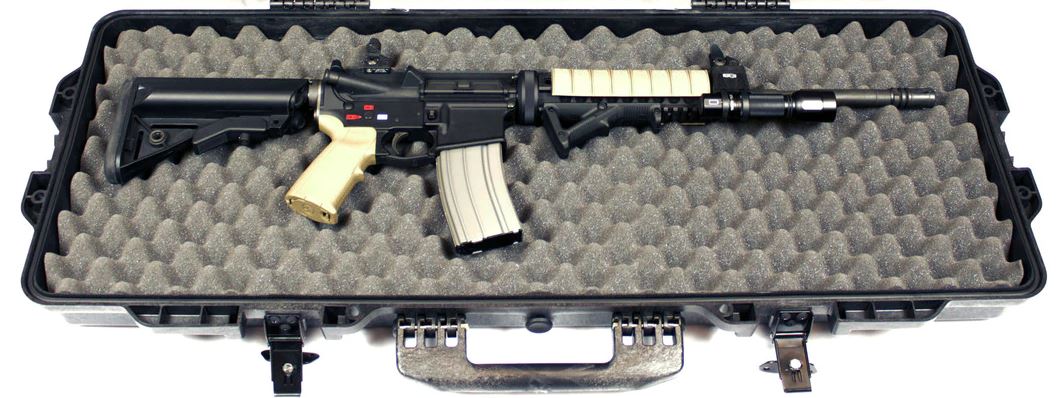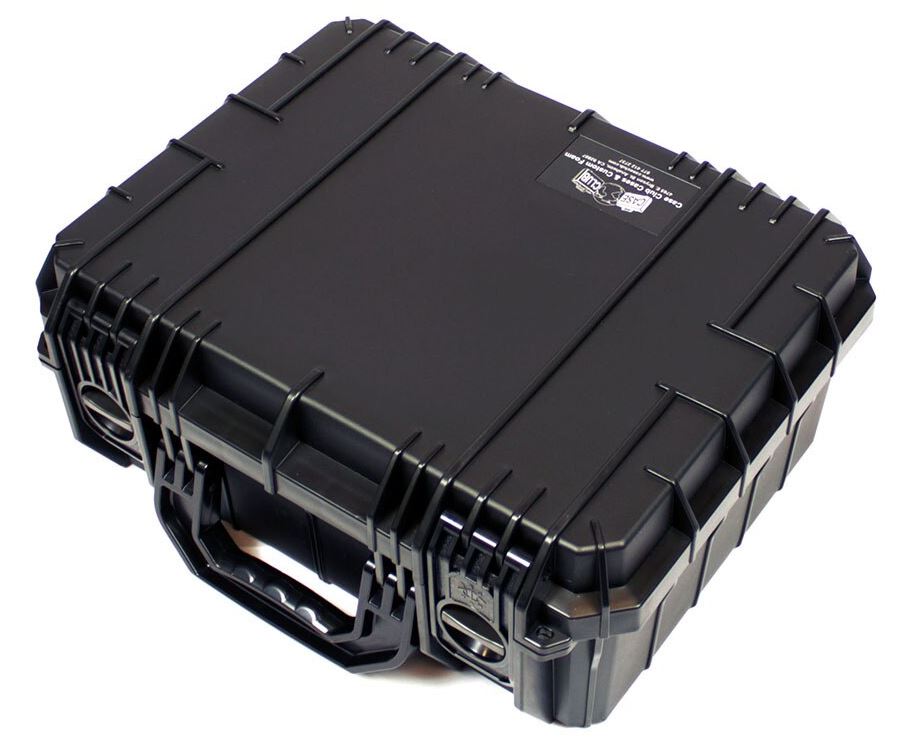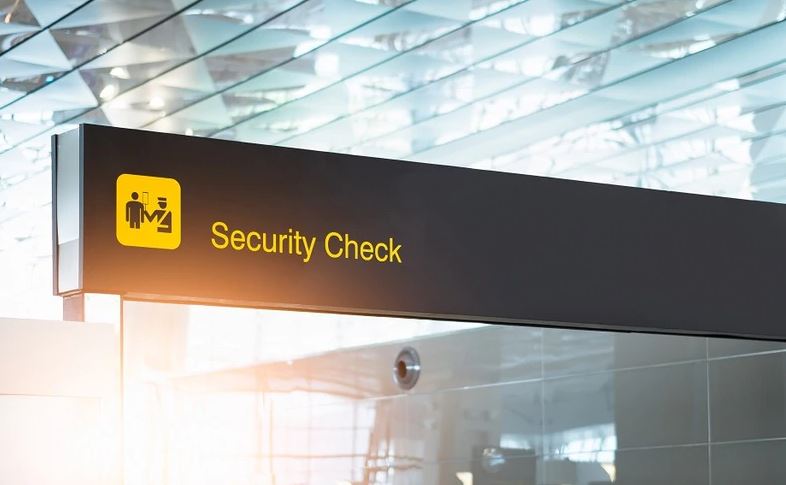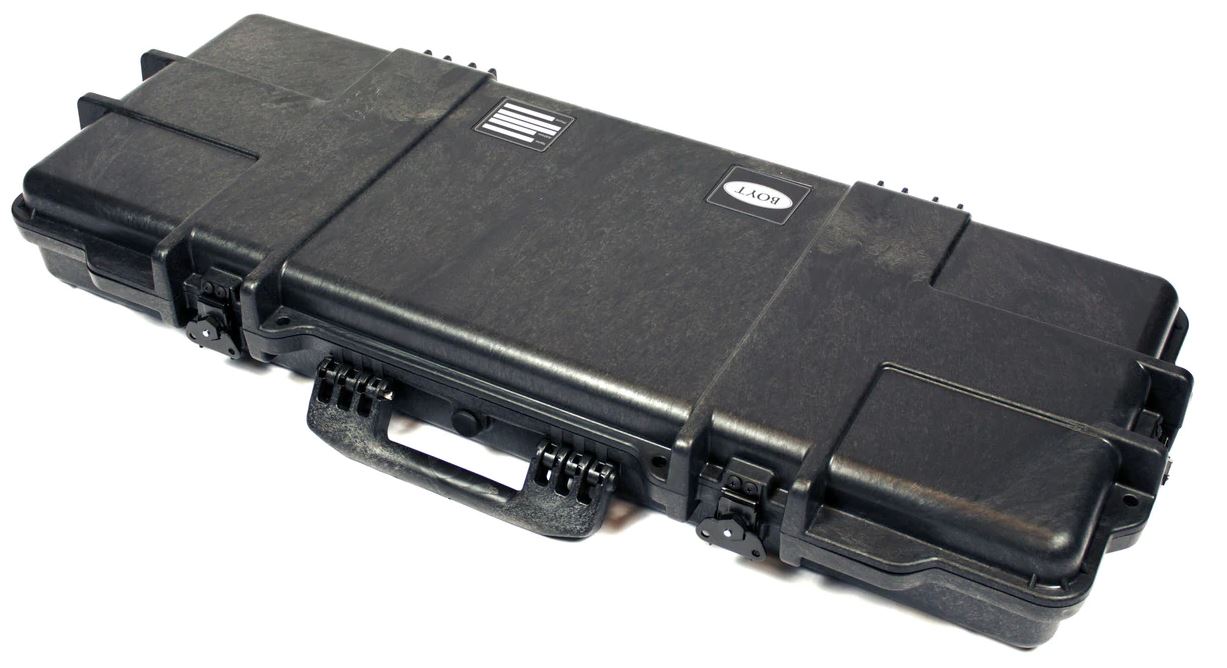How to Fly With a Firearm
Posted by 80-Lower.com on Feb 2nd 2021
Flying with your firearms is easier than you think. You simply need to ensure you're abiding by all state and federal laws, the rules the TSA provides, and their guidelines for properly storing and transporting your firearm through U.S. airports and on aircraft.
Importantly, these guidelines may change at any time and this article should not be your only source of information. This guide does not constitute legal advice of any kind. We are not attorneys. If you're unsure about anything relating to the legality of guns and air travel, contact the TSA directly by phone or email here. Perhaps the most important part of flying with a gun is what not to do, which we'll cover below. But first, Q-and-A's.
Frequent Questions
Q: Is it legal to fly with a firearm on an aircraft?
A: Yes. Internationally, the rules change and we won't be covering that. But if you're traveling between any of the fifty U.S. states, you may legally fly with a handgun, shotgun, or long gun as long as you can legally own and transport that weapon in your state and your destination state.
Q: Can I fly with my gun as a carry-on?
A: Absolutely not. Attempting to do so will quickly land you in handcuffs at your local airport. All firearms must be checked as stowed baggage at a special area near your airline's check-in counter. This area is managed by TSA and law enforcement personnel.
Q: Can I fly with my firearm's accessories as carry-ons?
A: You may carry onboard a rifle scope only. Other accessories, like grips, stocks, handguards, muzzle devices, internal firearm components, magazines, bipods, and all other accessories must be checked as baggage.
Q: What if I'm a law enforcement officer?
A: Even active-duty law enforcement officers must check firearms. You may only fly with your weapon equipped if you've completed the TSA's aptly-named "Law Enforcement Officer Flying Armed Training Course," which is beyond the scope of this article.
Q: Can I also fly with live ammunition and magazines?
A: Yes, with restrictions. We'll cover that below.
Q: What if I have a connecting or cancelled flight in a state where my gun is banned?
A: Federal law accounts for this with the Safe Passage Act, a sub-set of the Firearm Owners Protection Act, yet some states have attempted to supersede the judicial system by arresting air travelers who are legally transporting weapons. This is of particular concern in states like New York and New Jersey. In this case, it's best to ship your weapon to your destination before traveling. More on that next.
Q: I can ship my gun to myself?
A: Yes. You can avoid the risk of being targeted by non-gun-friendly states by shipping your firearm to yourself at your destination. The Bureau of Alcohol Tobacco, and Firearms (ATF) and federal law allow your weapon to be shipped to your destination address wherein another individual may receive the weapon. The weapon's packaging must be addressed as "in the care of" you, the out-of-state resident. To protect you and to avoid complications with your shipping carrier, we say it's best to have an FFL at your destination receive your firearm.
Q: What types of firearms can I legally fly with?
A: As a non-FFL gun owner, you may only fly with conventional rifles, shotguns, and handguns. That includes "typical" firearms you may purchase at a gun dealer without special licensing. Weapons like short-barreled rifles, short-barreled shotguns, and other restricted weapons like NFA firearms cannot be flown with unless you are a licensed manufacturer or licensed dealer, or you have first received express permission from ATF and the Attorney General. The Gun Control Act (GCA) clarifies:
“It shall be unlawful for any person other than a licensed importer, licensed manufacturer, licensed dealer, or licensed collector, to transport in interstate or foreign commerce any destructive device, machinegun (as defined in section 5845 of the Internal Revenue Code of 1986), short-barreled shotgun, or short-barreled rifle, except as specifically authorized by the Attorney General consistent with public safety and necessity.”
Obtaining such permissions is beyond the scope of this article. We would again refer you to an appropriate FFL, who may instead be able to assist in shipping your firearm to your destination. Of course, the restricted weapon must be legal in your destination state.
Flying With Guns: Storage Requirements
1. Your case must be hard-sided.
Soft cases and fabric containers are a no-go when it comes to storing and flying with your firearm. Your long gun, shotgun, or handgun must be stored in a hard-sided case that withstand physical abuse. If your case is advertised as being weather-resistant or waterproof, ensure it has a pressure relief valve. Checked baggage compartments on aircraft are pressurized but they are not typically climate-controlled. While in flight, changes in temperature and some change in pressure could cause the weatherproofing rubber O-rings on your gun case to blow out, or generally fail.

Obviously, we don't recommend just throwing your firearm into any old container, like a generic Pelican case. It should have appropriate padding to keep your firearm safe and secure during transit. Unlike the rifle pictured above, your weapon cannot have a magazine inserted in the magazine well. Even if the magazine is empty, it must be stored separately in a locking container. Your weapon must be clear and empty at check-in. We'll cover that below.
2. Your case must lock with a padlock or combo lock.

This is one instance where you should not use a "TSA-approved" lock for your checked baggage. In fact, TSA guidelines expressly state that only you should have access to your firearm while flying:
"Only the passenger should retain the key or combination to the lock unless TSA personnel request the key to open the firearm container to ensure compliance with TSA regulations. You may use any brand or type of lock to secure your firearm case, including TSA-recognized locks."
If, for any reason, law enforcement or TSA personnel need to inspect your firearm or its container, they will contact you. For that reason, a TSA-approved lock is not only unnecessary, it is not recommended. You do not want to give any other personnel potential access to your container without you present, for any reason.
3. Ammunition must be kept separate and locked, too.

TSA says that bringing an unloaded firearm into the airport with ammo that is readily accessible is a civil penalty that carries steep fines. In short, your ammunition must be stored and locked in a separate container that cannot be accessed without the padlock key or combination. We recommend investing in a hard-sided locking pistol case. These units can withstand physical abuse like a rifle case and they often come with locking points for a padlock or combination lock. The same rules apply here.
TSA's requirements for traveling with ammo:
- Ammo must be .75 caliber or smaller. Shotgun shells of any gauge are allowed.
- Ammo cannot be left in magazines or clips unless it is completely enclosed.
- Ammo must be stored in a second container inside your ammo's hard case.
- That means no loose rounds can be sitting idly inside your locking container.
- Keep ammo stored in their cardboard packaging, fully enclosed and sealed.
- Contact your airline to confirm limits on how much ammo you can fly with.
Checking in Your Firearm

By now you should've figured out 1.) Whether you can legally transport your firearm to your destination, 2.) Whether you'll fly with it as checked baggage, or ship it separately and 3.) What kind of hard-sided case and locks you need to properly secure your firearm. You're ready to fly -- but how do you actually go about traveling to the airport and getting on your flight without breaking the law? Checking in your firearm is surprisingly easy with proper planning ahead of time.
1. First, contact your airline.
Yes, the information you've studied should provide adequate knowledge. But you should always contact your airline and speak with them before flying with your firearm. TSA guidelines and the law might very well differ from what your airline allows in the way of traveling with guns. After all, airlines are private entities and can set their own rules and restrictions. When you call your airline, you should:
- Tell them you intend to fly with a firearm on your scheduled flight. Provide the flight number.
- Confirm your personal information and all flight information with your airline beforehand.
- Confirm whether your firearm and its ammo can be checked in with your airline.
- Confirm what storage requirements and guidelines the airline might have in place.
- Ask the airline whether their check-in counter needs any paperwork or declarations.
2. Next, contact both airports.
Again, airports might have their own rules and regulations concerning air travel and firearm transport, in addition to universal TSA guidelines and state and federal laws. Contact both your departure and arrival airports so they can provide you with important information about where and when you should check in your firearm. At some airports, law enforcement may even meet you outside the check-in area and request to inspect your weapon before allowing you inside. It's better to anticipate these procedures than to be surprised and unprepared on your travel days.
3. Record your firearm's serial number.
Although unlikely, checked baggage does get lost. If your firearm winds up not making it to your destination, it's critically important you work with both TSA, the airline, and law enforcement to track your weapon. Record its serial number, make, and model before flying. Law enforcement will require this information if you need to file a 'lost/stolen firearm' report. Take a photo of your firearm in its container before transport. This will provide another layer of security and it can act as proof if your weapon is damaged or misplaced during transit.
4. Place contact info inside the container.
Place your name, home address, phone number, email, destination, and if possible, the contact information of your destination's hotel or accommodations. In the event your firearm does get misplaced, this will help law enforcement contact you once your weapon is turned over to the authorities.
Quick Recap
We covered a lot of information in this guide, so let's recap the most important things to remember before and while flying with your firearms:
- You can fly with your firearms if they're properly stored in a hard case.
- Your firearms must be locked with a keyed padlock or combination lock.
- You typically can't fly with restricted or NFA gun unless you're an FFL.
- Ammunition must be stored separately and locked in a hard case, too.
- Contact your airline and both airports before traveling, to confirm requirements.
- Contact the TSA by phone or email if you're unsure about flying with a firearm.
- To avoid legal trouble in gun-restrictive states, you may ship your firearm instead.
DISCLAIMER: If you are new to the world of DIY gun building, you likely have a lot of questions and rightfully so. It’s an area that has a lot of questions that, without the correct answers, could have some serious implications. At 80-lower.com, we are by no means providing this content on our website to serve as legal advice or legal counsel. We encourage each and every builder to perform their own research around their respective State laws as well as educating themselves on the Federal laws. When performing your own research, please be sure that you are getting your information from a reliable source.


